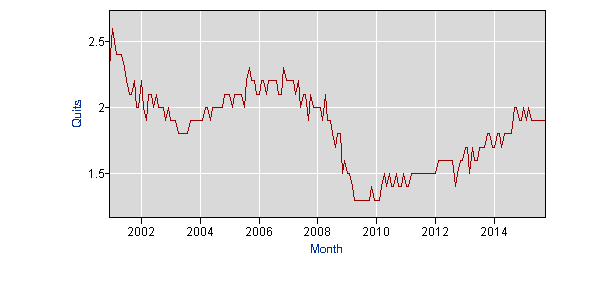December 09, 2015
Yesterday the Labor Department released October data from its monthly Job Openings and Labor Turnover Survey (JOLTS). The release got surprisingly little attention in the media.
While there were no big surprises, it does not paint a picture of a robust labor market. The number of job opening was down 150,000 from the September level and was almost 300,000 below the peak hit in July. That is not necessarily a big deal; the monthly data are erratic and a monthly change of this size could just be sampling error. Nonetheless, the number of opening has been essentially flat since April, which means that the relatively strong growth reported in the establishment survey does not seem to be making it difficult for firms to find workers.
Consistent with this story, the quit rate remained at a relatively low 1.9 percent. This is a measure of workers’ confidence that they can leave a job they don’t like and either quickly get a new job or survive on savings or the earnings of other family members. The 1.9 percent rate is well above the 1.3 percent rate at the bottom of the downturn, but low relative to pre-recession levels. In fact, in the weak labor market following the 2001 recession (we continued to lose jobs until September of 2003) the quit rate never fell below 1.8 percent. The current reading looks much more like a recession than a strong labor market. (The series only goes back to the end of 2000, so we don’t have long experience with it.)
Quit Rate

Source: Bureau of Labor Statistics.







Comments